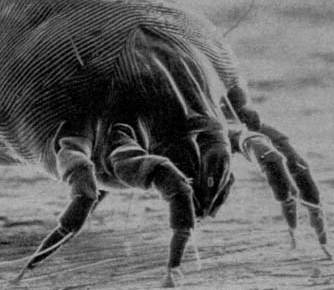 Dust mites are the major reason why people are allergic to dust. When people complain of a dust allergy, most of the time it is the dust mites that are at fault.
Dust mites are the major reason why people are allergic to dust. When people complain of a dust allergy, most of the time it is the dust mites that are at fault.
That said, controlling dust is 95% of the battle when it comes to controlling dust mites.
This article covers several tips for controlling dust.
7 Tips for Controlling Dust
If you are able to follow even one of these tips, you will improve the dust and dust mite situation in your home. Not all of the tips are practice for everyone. Implement the easy ones right away, and try to implement others as circumstances change.
1. Keep floor clear of objects and vacuum regularly. The less cluttered the floor, the easier it is to clean. The more often you vacuum, the less dust you will have. The two go together.
2. Keep surfaces clear of objects and vacuum regularly. As with floors, surfaces such as tables, dressers and shelves are major dust collectors. The fewer items there are on such surfaces, the easier it is to keep dust-free.
3. Shake out bedding regularly. Blankets absorb dust, and are ideal dust mite breeding grounds because they are warm with a little moisture at night when you sleep under them.
Shake them out the window, or put them in the dryer for 10 minutes without heat.
4. Keep closet doors closed. Doors keep dust out of closets. Some dust will collect on the closet floor, which can easily be vacuumed up. If you keep closet doors closed, surfaces, cloths and other objects will be very slow to collect dust.
5. Remove wall-to-wall carpeting. Carpets hold a tremendous amount of dust, and are ideal breading grounds for mites. If they become chronically damp, they also harbor moulds. Carpets in basements, especially if placed directly on concrete, are especially bad.
Replace with hardwood, linoleum, tiling etc. according to suitability and budget. You can use area rugs – bring these to the clearners at least once a year.
6. Avoid forced air heading. If you have the choice, radiant heating, such as electric or hot water, are much preferable over forced air because forced air heating tends to spread the dust around, and the ducts become inaccessible dust catchers.
This is especially true if you live in an apartment. You may not have access to the filters for replacement and upgrading, and you will have to share the bad house cleaning habits of other units in your building.
7. Install a HEPA filter on your furnace air filter. If you must have forced air (which most people are stuck with), install a HEPA filter in the fan unit. This reduces dust throughout the house, and reduces the rate at which dust collects on the surfaces in your home. It may even be better to have central heating with a HEPA filter than radiant heating, as air is circulated and filtered whenever the heating (or cooling) is on.
See the article about dust and allergies for more information about dust and how to control it.
{ 2 comments… read them below or add one }
SOLUTION TO DUST ALLERGIES
Hi,
My name is Shekhar and i am suffering from dust allergy, so what precautions should i take so that it gets cured permanently, well i know few but they not sufficient enough such as staying away from dust if u have any please suggest, i would be thankful if u will give me your feedback with good solutions.
SHEKHAR
Best advice in article
Hi Shekhar,
I think the article above covers the basics. If you have and specific questions please ask.